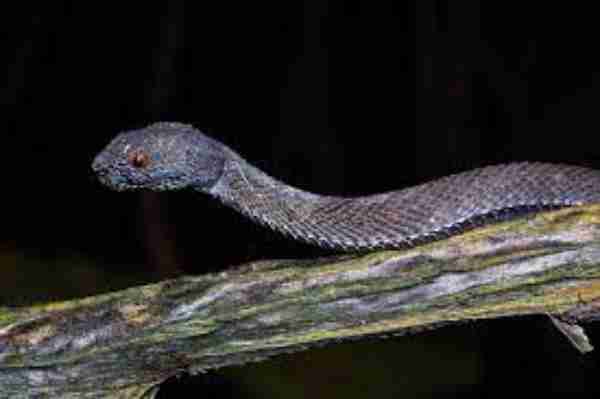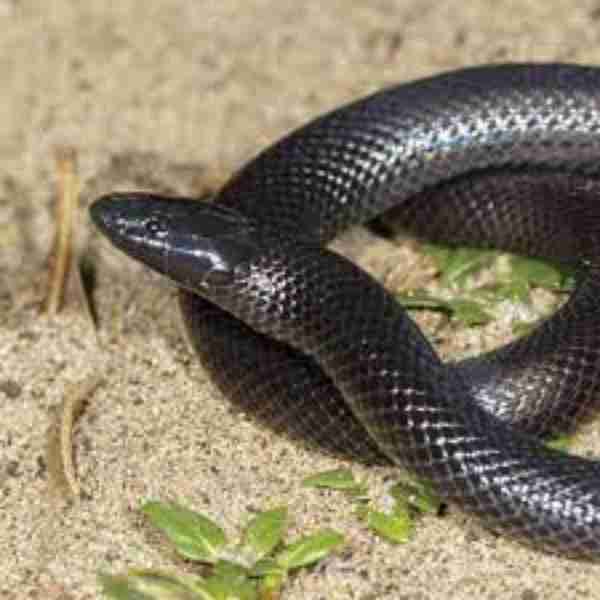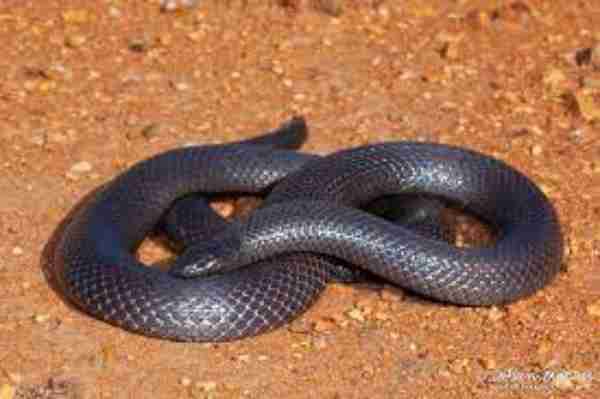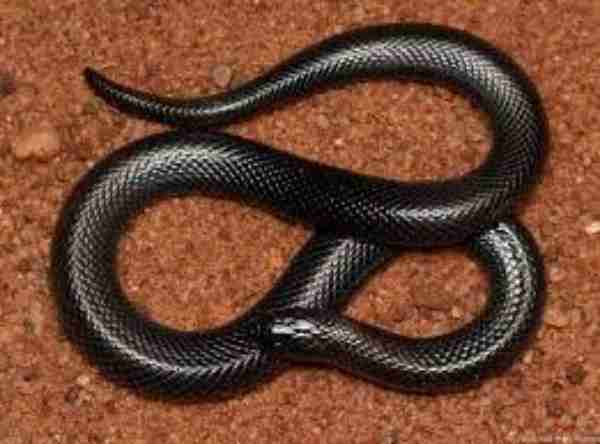Are you familiar with a flat yet enigmatic creature that glides in a sinuous manner, gleaming like a precious jewel, and inflicts harm through the injection of venom? Indeed, we are referring to purple serpents.
Table of Contents
Purple serpents are a distinct group of reptiles that elicit admiration from snake enthusiasts for their dazzling purple hue. Snakes, the ubiquitous reptilian species, are recognized for their limbless and slender physique, allowing them to navigate with agility despite their lack of limbs. While some possess potent venom capable of swiftly ending an adult’s life, it should be noted that not all snake varieties are venomous.
Purple snakes, cherished for their extraordinary colouration, occupy a special place in the hearts of snake enthusiasts. It is important to note that they are further classified into various species based on their habitat and scientific categorization.

This article delves into the most prevalent species of purple snakes, shedding light on their habitats, distinctive characteristics, and much more. Additionally, many individuals express an interest in keeping these serpents as pets but harbour apprehension regarding their venomous bites. Stay with us as we unravel the mysteries of these uniquely coloured snakes and determine whether they can be suitable pets or not.
An Overview
The captivating allure of these serpents stems from their stunning regal purple shade, endearing them to admirers despite their lethal venom. Fortunately, not all species within this category possess venomous traits.
Typically, these snakes exhibit a slender and graceful physique, ranging from small to medium-sized, with sleek bodies adorned by vibrant yellow eyes. The striking contrast of these yellow eyes against their flashy purple scales further enhances their visual appeal. Additionally, their captivating behaviour, including communal denning patterns and the formation of mating balls during the breeding season, adds to their allure.
Furthermore, these distinctively coloured snakes are not confined solely to jungles; they can be found dwelling in various habitats such as forests, grasslands, and wetlands. Likewise, their dietary preferences are not restricted to a single prey type. Typically, they consume a variety of sustenance, including insects, worms, and small mammals.
Naturally, all species of purple snakes belong to the Reptilia class, specifically the order Squamata and the suborder Serpentes, just like all other snakes. However, their families and genera differ based on their unique characteristics and evolutionary relationships.
Most Common Types of Purple Snakes
The categorization of these snakes is based on their distinctive traits, behaviour, and variations in their natural habitats. While they all belong to the same class and order, their families may differ. Below, we will explore the most prevalent species of purple snakes, highlighting their dietary preferences, habitats, and more.
- Purple Garter Snake – Thamnophis sirtalis:

One of the commonly encountered purple snake species is the Purple Garter Snake, scientifically known as Thamnophis sirtalis. It falls under the order Squamata, suborder Serpentes, family Colubridae, and genus Thamnophis. These snakes are notable for their shimmering purple or blue scales, adding to their captivating nature. Additionally, they exhibit communal denning habits and engage in mating balls during the breeding season. Importantly, this species is non-venomous and feeds on various prey, including worms, insects, raccoons, skunks, and small fish. They can be found in diverse habitats across North America, such as woodlands, fields, and marshes.
- Mangrove Pit Viper – Trimeresurus purpureomaculatus:

Another remarkable species is the Mangrove Pit Viper, scientifically referred to as Trimeresurus purpureomaculatus (previously Cryptelytrops purpureomaculatus). These snakes are indigenous to Southeast Asia and belong to the family Viperidae and the genus Trimeresurus. They are relatively small, with an average size of 3-4 feet. The distinctive feature of these snakes is the purple colouration on their heads. Moreover, they are venomous snakes, capable of delivering a lethal bite to humans. Their venom aids in capturing birds, lizards, and other small animals. Mangrove pit vipers are predominantly arboreal and inhabit a wide range of tropical and subtropical rainforests.
- Purple Glossy Snake – Arizona elegans:

The Purple Glossy Snake, scientifically known as Arizona elegans, is another prominent species of purple snake. It shares the same order (Squamata) and suborder (Serpentes) as the aforementioned snakes but belongs to the family Colubridae and the genus Arizona. These snakes are primarily found in the southwestern United States and northern Mexico. Their preferred habitats include deserts, scrublands, and rocky canyons. Like other purple snakes, they exhibit iridescent purple or blue scales and possess an eye-catching appearance. Similar to Purple Garter Snakes, they are non-venomous and feed on small mammals, lizards, and birds.
- Common Purple-Glossed Snake – Amblyodipsas polylepis:

The Common Purple-Glossed Snake, also known as Gewone Persglansslang, bears the scientific name Amblyodipsas polylepis. It belongs to the Atractaspididae family and the Amblyodipsas genus. This particular species is a venomous rear-fanged snake, typically measuring around 24 inches in length but occasionally exceeding 40 inches. They possess smooth bodies adorned with dorsal scales and lack pits. The venom of these snakes is mildly toxic, capable of causing harm to humans but not instantly fatal.
They are primarily distributed in Southern African regions and are commonly found in excavated soil. It is worth noting that they are often mistaken for other small, shiny black snakes, including the venomous stiletto snakes. These snakes have a unique defensive response, tucking their heads beneath their bodies and employing tail movements to distract potential threats. They are generally docile and rarely attempt to bite.
- Katanga Purple-Glossed Snake – Lamprophiidae:

The rear-fanged Katanga Purple-Glossed Snake belongs to the family Lamprophiidae and is found in various parts of Africa. This snake species is further divided into two subspecies: Amblyodipsas katangensis ionidesi and Amblyodipsas katangensis katangensis. They possess a black or brown skin base with a purple gloss. Katanga purple-glossed snakes are venomous and primarily nocturnal hunters, preying on reptiles, mammals, birds, and even other snake species.
Why Are They Purple?
The striking colouration and shimmering scales of purple snakes often leave people puzzled and captivated. The distinctiveness of their purple hue raises questions about how they acquired such a flashy colour.
While snakes come in a range of colours, including black, brown, and red, the unique purple colouration stems from the interaction of their chromatophore skin cells. These cells are responsible for the pigmentation and colour variations observed in snakes. In the case of purple snakes, the chromatophores create a fascinating interplay of colours, sometimes disguising the true hue beneath their iridescent scales.
In essence, the captivating colouration of purple snakes arises from the combination of pigments and structural elements present in their scales. This remarkable colour spectrum can span from deep and rich shades of purple to shimmering blues, creating an eye-catching display.
Can Purple Snakes Make Good Pets?
The answer to whether purple snakes can be kept as pets depends on their specific species. As mentioned earlier, some species are venomous, while others are nonvenomous. Additionally, their behaviour, dietary preferences, and care needs are essential considerations.
The captivating colouration and unique scaling of purple snakes may attract individuals who typically have no affinity for reptiles. If you are considering keeping one as a pet, it is likely because of its vivid appearance.
However, determining whether a purple snake is suitable as a pet requires a case-by-case evaluation. Certain species may make good pets, while others may not be suitable due to factors such as venomous nature, size, temperament, or specific care requirements.
Conducting thorough research on the particular species you wish to keep is crucial. Seeking guidance from authorized veterinarians or reptile experts who have knowledge about that specific species is highly recommended. Their expertise will provide valuable insights into whether keeping a particular purple snake species as a pet is a viable and responsible choice.
Are Purple Snakes Threatened?
Purple snakes may not be facing extinction as a whole, but the status of their species can vary greatly. Unfortunately, some of these snakes are in a vulnerable position and are even considered endangered. This is due to a multitude of factors, including habitat loss, pet trade overcollection, hunting, and the use of pesticides. As an example, the Purple Pit Viper is one such species that is considered vulnerable. This is largely due to habitat loss and over-collection for the pet trade. It is essential that we understand the threats these snakes face and work to protect them so that they can continue to thrive in their natural habitats.
Exciting Facts About Purple Snakes
Apart from their distinctive colouration, purple snakes possess several fascinating characteristics that set them apart from other snake species. Here are some intriguing facts about purple snakes:
- Their iridescent scales exhibit a captivating purple or blue hue when exposed to sunlight, making them truly mesmerizing creatures in the animal kingdom.
- The mangrove pit viper displays a striking purple colouration on its head, serving as a warning signal to potential predators.
- Purple garter snakes exhibit communal denning habits, allowing a large number of snakes to gather together in a single hibernating location.
- The purple garter snake is notable for its “mating balls” phenomenon during the breeding season, where multiple male snakes congregate around a single female.
- The purple pit viper is an arboreal species that utilizes its venom to capture birds, lizards, and other small prey.
- Purple snakes have the ability to adapt to various environments, including tropical regions, rainforests, deserts, and scrublands.
- It is important to note that some species of purple snakes possess venom, while others are non-venomous.
- These captivating facts contribute to the allure and uniqueness of purple snakes within the snake kingdom.
Frequently Asked Questions
Are purple snakes venomous?
The venomous nature of purple snakes varies depending on the species. While some, like the Purple Garter Snake, are non-venomous, others, such as the Purple Pit Viper, possess venomous capabilities.
What do purple snakes eat?
Purple snakes are categorized into various species based on their temperament, habitat, food preferences, and scientific classification. As a result, each species has its own specific diet, which typically includes a range of prey such as lizards, birds, worms, insects, small fish, and other small mammals.
Are purple snakes rare?
Purple snakes belong to a unique group of limbless reptiles that are uncommon to come across. Their distinct and captivating colouration makes them highly sought after among enthusiasts who have a passion for snakes.
Key Points
- The vivid and distinct colouration of purple snakes gives them a striking resemblance to precious gemstones, capturing attention wherever they go.
- Purple snakes are further classified into various species, distinguished by their unique behaviours, preferred habitats, dietary choices, and scientific classification.
- The purple hue displayed by these snakes is a result of pigments and structural colouration present in their scales.
- Before deciding to keep a purple snake as a pet, it is crucial to take into account the factors discussed in the article and seek guidance from a reptile expert to ensure the best care for the snake.
Final Words
In conclusion, purple snakes are a fascinating and distinctive reptile group renowned for their striking purple colouration and eye-catching scales that adorn their slender bodies. However, within this broad category, they are further classified into various species, each characterized by notable differences in temperament, genus, scientific family, and habitat.
These adaptable snakes can thrive in diverse environments, including forests, deserts, scrublands, and more. Furthermore, their behaviour and temperament exhibit unique traits that set them apart from other snake species.
Of utmost importance, it is crucial to note that purple snakes encompass a range of venomousness. While some species are non-venomous, others possess varying degrees of venom potency. It is crucial to exercise caution and respect their potential danger.
Although not currently classified as threatened, certain species of purple snakes have experienced population decline due to human activities. Without adequate conservation measures, these unique-coloured snakes may face the risk of extinction in the near future.
In light of these factors, it is essential to appreciate and protect these captivating creatures to ensure their continued existence in our natural world.
Reference:
- https://dream-library.com/purple-snake-dream-meaning.html
- https://en.wikipedia.org/wiki/Amblyodipsas
- https://zooatlanta.org/animal/eastern-indigo-snake/

Rahul M Suresh
Visiting the Zoo can be an exciting and educational experience for all involved. As a guide, I have the privilege of helping students and visitors alike to appreciate these animals in their natural habitat as well as introducing them to the various aspects of zoo life. I provide detailed information about the individual animals and their habitats, giving visitors an opportunity to understand each one more fully and appreciate them in a more intimate way.









